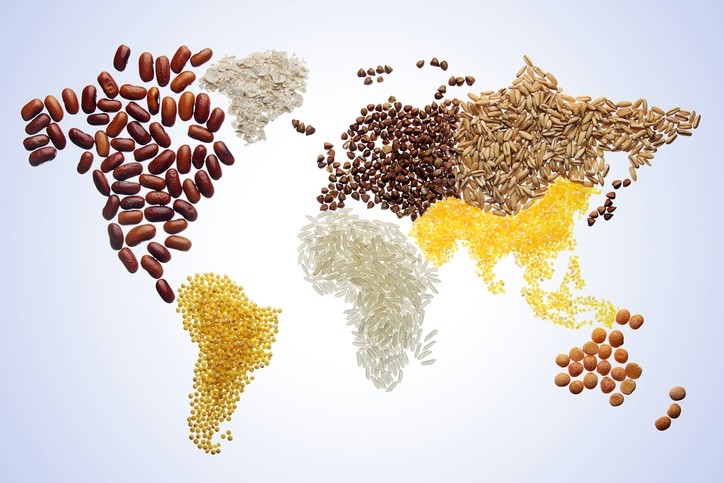Hope To Wipe Out Hunger By 2030 As Food Insecurity Rises

Global hunger has not recovered since the 2020 COVID-19 pandemic, leaving as many as 828 million people hungry in 2021, according to the United Nations’ latest State of Food Security and Nutrition in the World report.
About 150 million more people have been affected by hunger since the onset of the pandemic, according to the report, which only reflects data from 2021 and does not include deterioration this year due to Russia’s invasion of Ukraine. The increase in 2021 shows how inequality in economic recovery and unrecovered income losses have had a wide effect on global food security, the 2022 report said.
“What that’s telling us is that things are not getting better. We haven’t really pulled through from the pandemic, there’s these lingering effects. And now we have further shocks … the inequalities, the lack of recovery in incomes, and then new challenges like the war in Ukraine which are continuing to create problems,” Cindy Holleman, a senior economist of food security and nutrition with the Food and Agriculture Organization, told Devex.
“It’s quite disappointing that we’re still seeing quite a big jump in the number of hungry people.”
The flagship report is jointly produced by FAO, the World Food Programme, the International Fund for Agricultural Development, the World Health Organization, and UNICEF. It provides the latest data regarding food security and nutrition while analyzing challenges toward achieving Sustainable Development Goal 2, ending hunger.
That goal is in jeopardy as current projections show ending hunger by 2030 is not possible on the current trajectory.
“It’s quite shocking. In fact, the projections are that by 2030, we’re going to be at the same level of where we were in 2015 when we first adopted these new Sustainable Development Goals,” Holleman said. “That puts it in perspective that things aren’t going well. We were making some gains, they’re being wiped away, and we’re standing still if not going backwards.”
The prevalence of undernourishment, which had been mostly unchanged in 2015, rose in 2020 to 9.3% from 8%. It went up further in 2021 to 9.8%. The prevalence of moderate or severe food insecurity also jumped in 2020 but was mostly unchanged in 2021. But within that category, severe food insecurity did increase, “reflecting a deteriorating situation for people already facing serious hardships,” according to the report.
Africa has the highest burden of food insecurity, with 20.2% of people facing hunger in 2021. In both Asia and Latin America and the Caribbean, 8.6% of people were facing hunger, while 5.8% in Oceania and less than 2.5% in North America and Europe were. Globally and in every region, more women were food insecure than men.
Holleman said the true impact of COVID-19 on global nutrition has yet to be calculated, with figures supplied by WHO and UNICEF outdated due to difficulties gathering data during the pandemic. In 2020, some 3.1 billion people could not afford a healthy diet, a number which is expected to have risen since.
“Healthy diets are critical for nutrition and good health. We’re seeing obesity and malnutrition in different forms increasing, and we’ve got to really get on top of this issue of affordability,” Holleman said.
“If people can’t even access a healthy diet, they can’t even make the choice to choose a healthy diet … In this context of a global economic recession, money is tight — how are we going to start transforming our food system so that we have more affordable, healthy diets?”
One way to do this is to repurpose government support for food and agriculture, the report suggests, noting that “recent setbacks indicate that policies are no longer delivering increasing marginal returns in reducing hunger, food insecurity and malnutrition.” Currently, worldwide support for food and agriculture amounts to nearly $630 billion a year.
“It’s quite shocking. In fact, the projections are that by 2030, we’re going to be at the same level of where we were in 2015.”
— Cindy Holleman, a senior economist of food security and nutrition, Food and Agriculture OrganizationMost of that is for individual farmers, the report said, “through trade and market policies and fiscal subsidies largely tied to production or unconstrained use of variable production inputs.” But much of this support doesn’t actually reach farmers, it distorts the market, it harms the environment, and is not supporting production of nutritious foods, according to the report.
Agricultural support often promotes the production of cereals, beef, and dairy products at the expense of more nutritious crops such as fruits, vegetables, and pulses, Holleman, who helped produce the report, said.
“Governments need to start to rethink the money that they’re investing through their agricultural support to producers and fiscal subsidies. All that kind of money that’s going out, what’s the effect it’s having? And can we do something better with it? And the answer is ‘Yes we can,’” Holleman said.
“It does vary country by country, and whether countries are high-income countries or low-income countries, but the support to agriculture can be better allocated so that it promotes more healthy diets and it makes … nutritious foods more available.”
Source: https://www.devex.com/news/hunger-gains-on-track-to-be-wiped-out-by-2030-as-food-insecurity-rises-103544

 Previous Post
Previous Post Next Post
Next Post